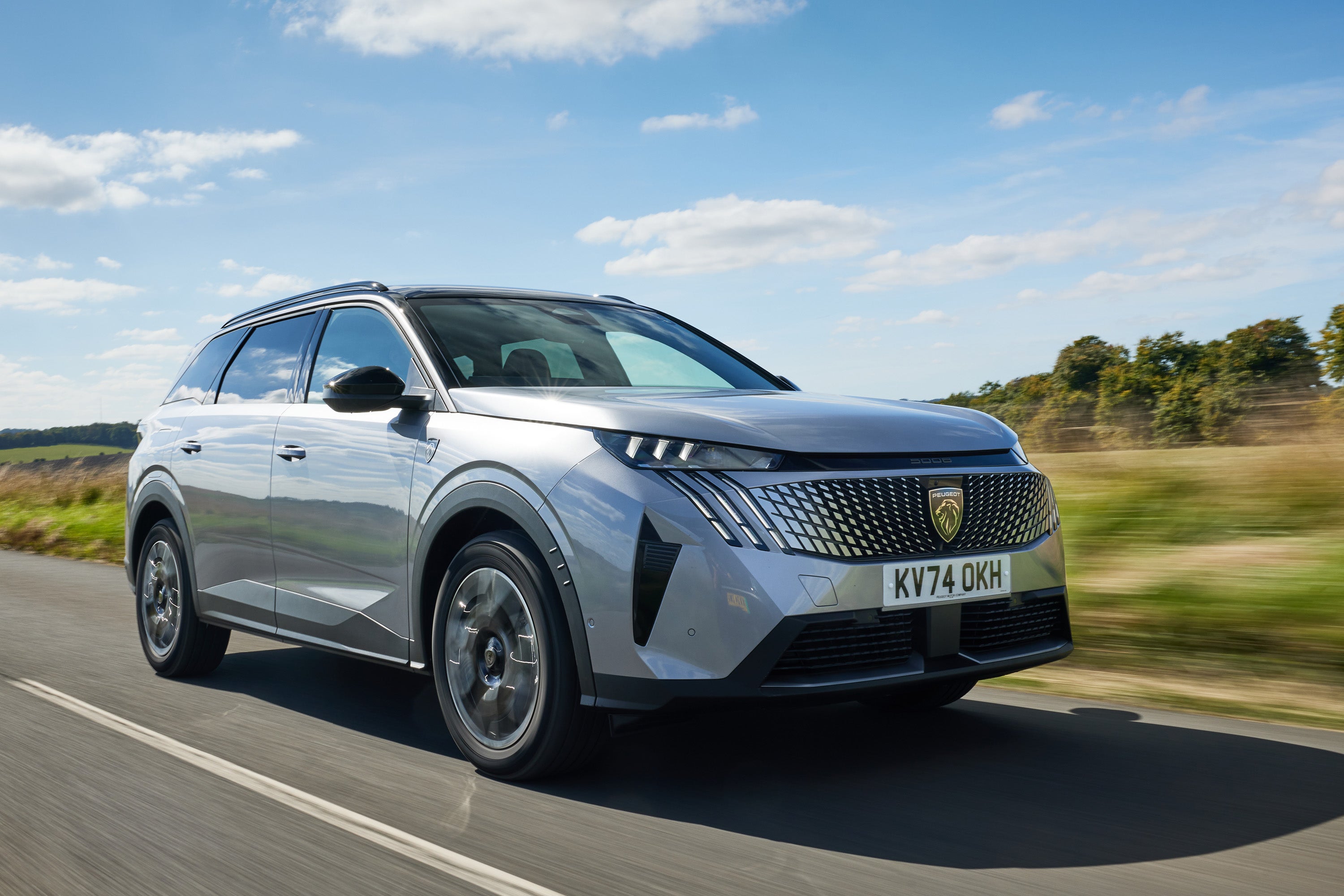Peugeot 5008 Review 2025: Price, specs & boot space
Written by Ivan Aistrop
Quick overview
Pros
- Impressive seven-seat practicality
- Lovely interior and good quality
- Plentiful standard equipment
Cons
- Mild-hybrid powertrain isn’t brilliant
- Pretty average dynamically
- Peugeot’s historical reliability record is questionable
Overall verdict on the Peugeot 5008
"The latest third-generation of the Peugeot 5008 seven-seater family SUV is really convincing in a number of areas."
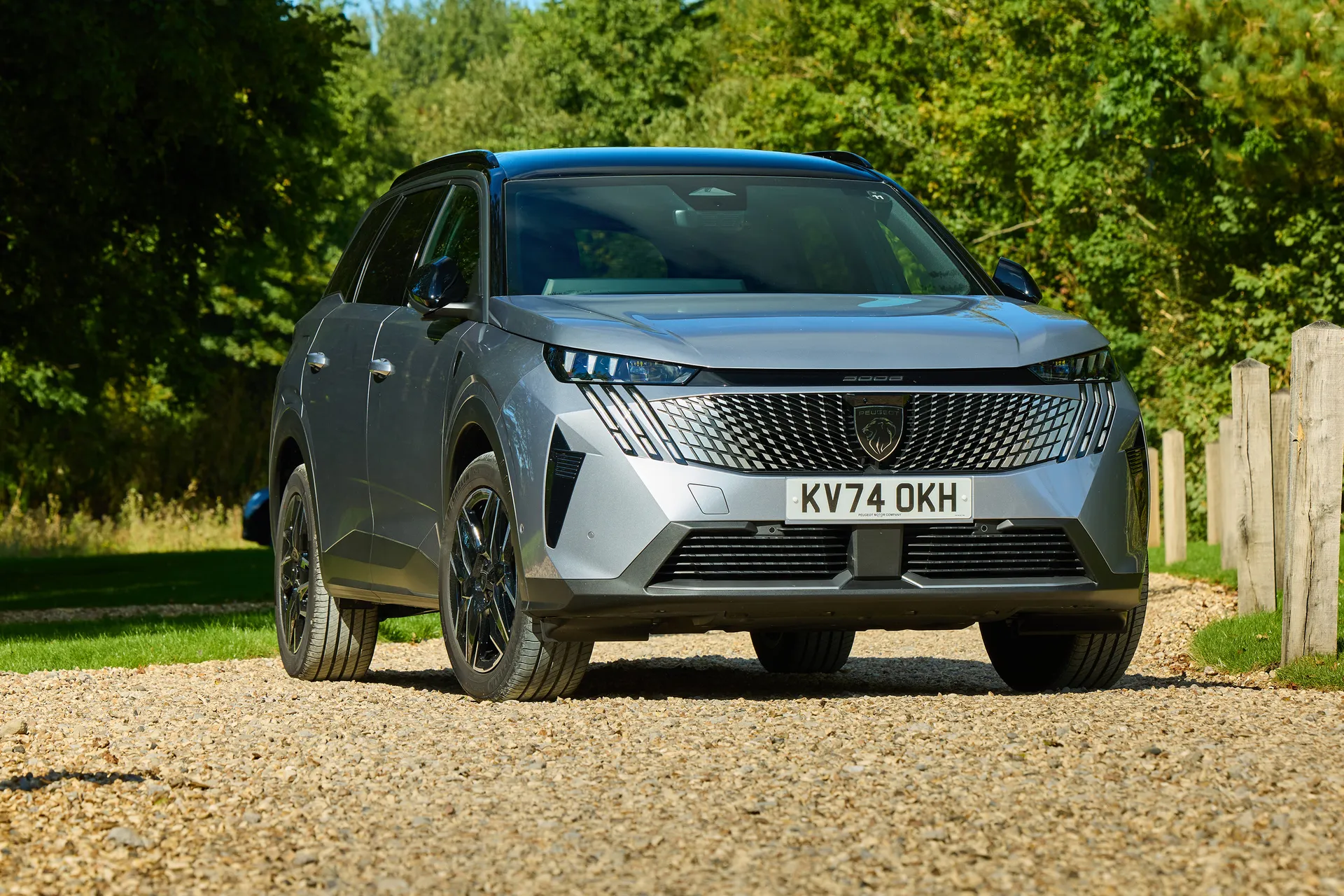
For a long time, the Peugeot 5008 has been a very popular family car. The first iteration of the car was a bit, well, odd, with its part-MPV-part-off-roader, neither-here-nor-there styling, but with the second generation, the 5008 nailed its colours to the mast as a fashionable SUV, giving buyers the seven-seat practicality they needed, along with the trendiness they craved. It was also good to drive, well-equipped, and high in quality.
In 2024, that second-generation car was replaced by a new third-generation 5008, and for the most part, the new car serves up more of the same. That seven-seat practicality is present and correct, with good space for both passengers and luggage, yet the car still looks sophisticated.
Open the door, and it looks even better. The interior design is modern, stylish and attractive, while the materials feel plush, the infotainment system is really good and there’s stacks of standard equipment provided regardless of whether you choose the entry-level Allure trim or the range-topping GT version. All things considered, this is a truly lovely place in which to spend time.
At the beginning of the last paragraph, we said ‘for the most part’, and that’s because while the previous 5008 was good to drive, it’s fair to say that the latest version has lost a step in that regard. The ride is a little firm and knobbly, and the handling is rather lacklustre, while the one powertrain we’ve tried struggles on both performance and refinement.
On that subject, we should probably mention at this point that the 5008 is available both in all-electric form and with petrol engines: the latter are available in both mild-hybrid (that’s the one we’ve tried) and plug-in hybrid forms. Those are the ones we’re concentrating on in this review, and if you’d like to learn more about the all-electric versions instead, you can read the separate review we’ve written on those variants here.
All in all, then, the 5008 is rather average on the road, but it’s competitive in most other areas, and in the areas of interior design, quality and infotainment, it’s borderline dazzling.
Is the Peugeot 5008 right for you?
If you need a car to carry seven people, but you want to carry them in a cabin that’s roomy, stylish, luxurious and stuffed with luxury kit, then the Peugeot 5008 is a really good choice. Granted, the 5008 is a little average on the road, with a slightly lumpy ride, limited performance and hit-and-miss refinement, but if you’re more concerned with other aspects of your car, then you’ll likely be very happy with it.
What's the best Peugeot 5008 engine/model to choose?
In terms of powertrain, this question is a little tricky to answer. We’ve only tried the 1.2-litre mild-hybrid petrol so far, and we haven’t been enormously impressed with it. However, until we’ve tried the more powerful PHEV version, we can’t say for sure whether or not it’s any better.
In terms of trim level, the cheaper Allure version comes with a generous kit list, so most folk will probably be fine with that. Then again, the GT does come with smarter styling, plus desirable features such as adaptive cruise control and expanded ambient lighting that makes the cabin look even cooler.
What other cars are similar to the Peugeot 5008?
There are a couple of other Stellantis-Group SUVs built on the same STLA platform as the 5008, those being the Peugeot 3008 and Vauxhall Grandland, but those are both five-seaters, while the 5008 is a seven-seater. Other mainstream seven-seater SUV options include the Skoda Kodiaq, Land Rover Discovery Sport, Mazda CX-60, Hyundai Santa Fe and Kia Sorento. The Dacia Jogger could be considered a more budget alternative.
Comfort and design: Peugeot 5008 interior
"You might think that the Peugeot 5008 is an arresting-looking thing from the outside, with all its elaborate details and LED lighting with claw-like signatures. Well, wait until you open the door and clap your eyes on the interior because that’s where the 5008’s real appeal lies."
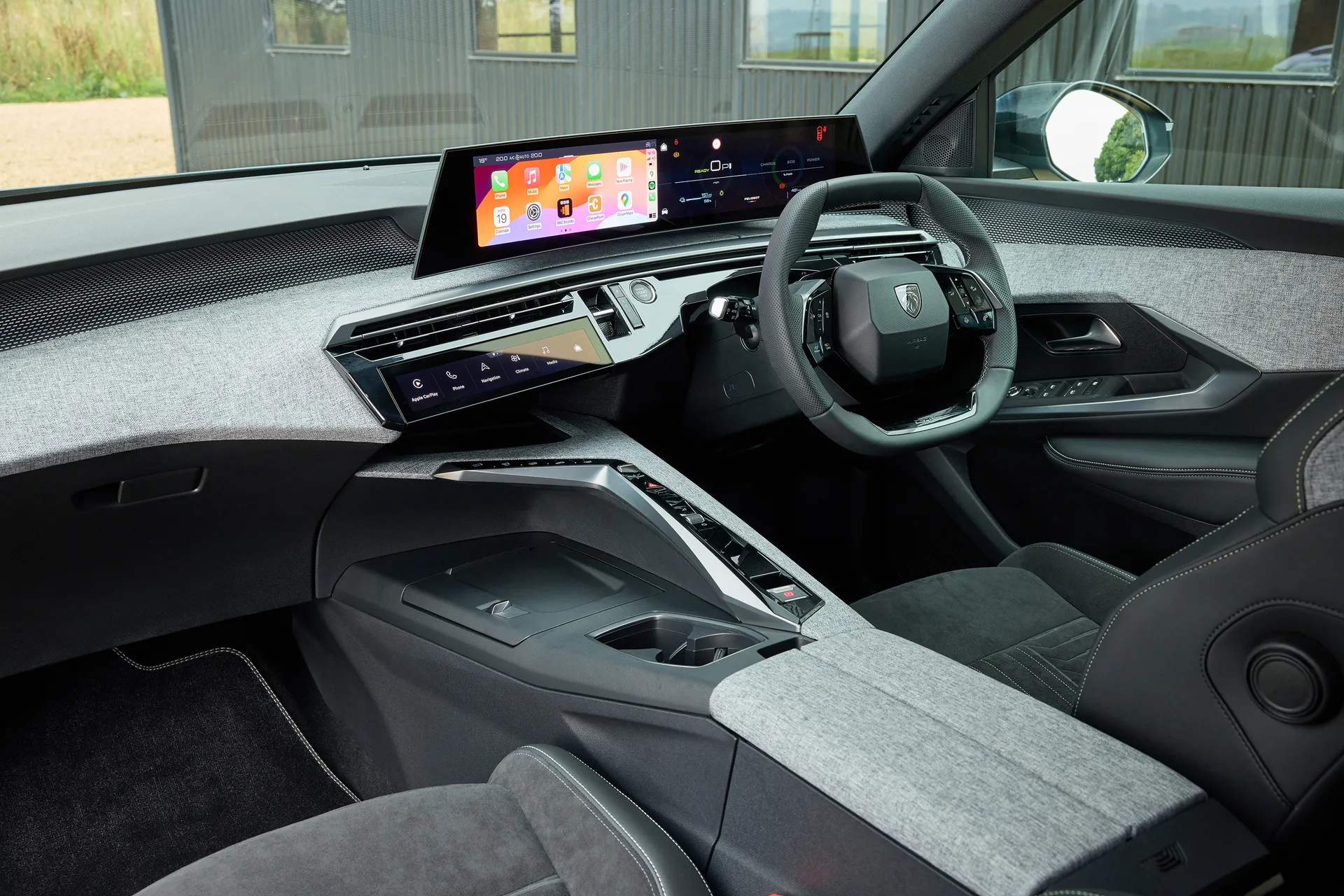
Quite simply, the design is stunning, in a way that feels modern, elegant and imaginative. The fact that the massive driver’s screen is designed to look like it’s hovering over the top of the dashboard is a really nice touch, and below that, you’ll find a tasteful combination of shapes, structures, colours and textures that make the cabin look interesting as well as attractive.
In the Allure model, there’s multicoloured ambient lighting that seeps out from underneath the digital display and centre console which, if we’re honest, is pretty easy to miss. You won’t miss it in the GT model, though, because this has an extended ambient lighting package that expands the light into the textured horizontal recess that runs across the dashboard and into the door tops, and it looks really cool, especially at night.
Being a Peugeot, you get the French firm’s trademark i-Cockpit driving position arrangement. This means that rather than looking at your instruments through the steering wheel like you do in most cars, you get a smaller steering wheel and view your driving data over the top of it instead.
Early efforts at this arrangement were mixed: some drivers felt that the wheel had to be positioned too low to be comfortable, while some more gangly drivers struggled to fit their long legs beneath the wheel at all. With the latest 5008, though, it seems that Peugeot has been taking this approach long enough to get it right, and you’re unlikely to encounter either problem, although, for the uninitiated, things might still feel a little odd to begin with.
Quality and finish
With such lavish and elaborate interior design, you don’t want the effect to be undermined by any perceived shortage of quality in the materials used. Thankfully, with the 5008, it really isn’t.
The infotainment screen has a glossy, high-definition look, the top of the dashboard has a squishy soft-touch covering, and nearly everything else is finished with a colourful textile finish (this stuff is swathed right across the dashboard and doors), a bright metallic trim a or a glossy black panel. If you really hunt around in the very lower reaches of the cabin you’ll find one or two panels that are a little harder and less appealing, but these are tucked away out of the way of your eyes and fingertips, so don’t detract from the car’s otherwise impressively swish feel.
Infotainment: Touchscreen, USB, nav and stereo in the Peugeot 5008
This isn’t an area in which Peugeot has always excelled, but happily, it seems that the latest-generation infotainment system fitted to the 5008 has marked significant improvements in a number of ways.
For starters, the system looks very impressive. There’s a massive 21.0-inch display panel that curves around the driver, and it’s cleverly designed to look like it’s hovering above the top of the dashboard. The right-hand side of the screen sits behind the steering wheel and shows the driver all the usual driving information, while the right-hand side of the screen extends into the middle of the dashboard, and serves as the now-obligatory central touchscreen. The layouts for both sides of the screen can be customised in a variety of ways.
Now, many of the more sophisticated infotainment systems on the market these days have woefully long and convoluted menus, but on that score, the Peugeot’s system does pretty well, because most of the various menus are broken down into manageable bite-size chunks. Things are made even better on that score by what Peugeot calls the ‘i-Toggle’ controller. This is essentially another small touchscreen panel that lives lower down on the dashboard, and this displays a range of infotainment shortcuts that you can quickly and easily customise for yourself.
The ‘Home’ shortcut is always displayed, but there are up to ten other slots that you can configure for shortcuts to your most-used functions, housed in two blocks that you swipe between horizontally. It all works really well and makes navigating the system even easier. You’ll also like that the graphics are slick and stylish.
Okay, so not everything’s perfect. Some of the screen transitions take a needlessly long time because they feature over-elaborate animations, and the screen sensitivity isn’t that great, so you often find yourself having to hit an on-screen icon more than once for your command to register. It’s also slightly annoying that your temperature controls aren’t always a permanent fixture on the central screen, although that’s less of a problem if you dedicate one of your shortcuts to the ventilation system.
In terms of functionality, you get the same level regardless of the trim level you plump for. All 5008s have Bluetooth, DAB, wireless Apple CarPlay and Android Auto, native navigation, a wireless smartphone charger, and ‘OK Peugeot’ voice commands.
Space and practicality: Peugeot 5008 boot space
This is an important area with any seven-seater car, and thankfully, the 5008 does quite well. Set the sliding mechanism of the front seats up for a six-foot driver (they go a lot further back if you need them to, obviously at the expense of middle-row legroom, and there’s lots of front headroom as well), and there’s space behind for an adult of the same proportions.
The middle row of seats slides, too, and if set to the rearmost point of its runners, that six-foot adult will have huge amounts of legroom in which to stretch out. With the middle seats in their forwardmost position, meanwhile, that same adult will fit, but space is a lot more restricted, and they may even find their knees pressing into the backs of the front seats. Either way, there’s ample headroom in the middle row.
The third-row seats cantilever up from the boot floor quickly and easily. Not that you’ll carry a six-foot adult in the third row very often - if at all - but for the sake of consistency, we’ll continue using that same yardstick as we have previously. If the middle-row seats are slid all the way back, then there’s no way that adult is fitting in the third row: there simply isn’t enough room for their legs. Slide the middle seats all the way forward, though, and your yardstick sidekick will fit pretty easily: okay, so legroom will be too limited for them to stretch out, and headroom will also be snug, but they’ll fit comfortably enough to travel back there for a decent amount of time.
Like we say, though, ordinarily it’ll be a smaller child sitting back there rather than a fully grown adult, so they will have more room to play with, and you’ll find that when all seven seats are needed, those in the middle- and rearmost rows will probably just negotiate to get themselves a fair share of the space available, with the middle seats sat somewhere in the middle of their travel. One more thing on that: the middle seats have a base that’s split 60/40, so they slide back and forth in two portions of that size. The backrests of the same row, meanwhile, are split 40/20/40 to give you more versatility when folding the seats down to maximise cargo space.
Lift the tailgate, and you might initially think you’ll need to do that on a fairly regular basis, because the boot looks very small with all seven seats in place. There’s space for a couple of soft shopping bags, but that’s it. However, if you lift the moveable boot floor, you’ll find a lot more space underneath, and all combined, that amounts to 348 litres of space with all the seats in place, and that’s not too far off what you get in a Volkswagen Golf.
With the third row of seats folded down, Peugeot quotes a boot capacity figure of 916 litres, but do bear in mind that this includes that underfloor portion, so if you reinstate that moveable boot floor (there’s space underneath it to carry the retractable load cover, handily), you’ll get a bit less, although you still won’t be struggling.
With only two seats in place and all the cargo-carrying configurations set to their maximums, the total loadspace you get is 2,232 litres, according to Peugeot. All the folded seats lie fairly flat and level with each other, too, so there aren’t many obstructions to get in your way when loading.
Handling and ride quality: What is the Peugeot 5008 like to drive?
"The Peugeot 5008 does an impressively sparkling job in a number of areas, but it has to be said that, on the road, the car is pretty average."
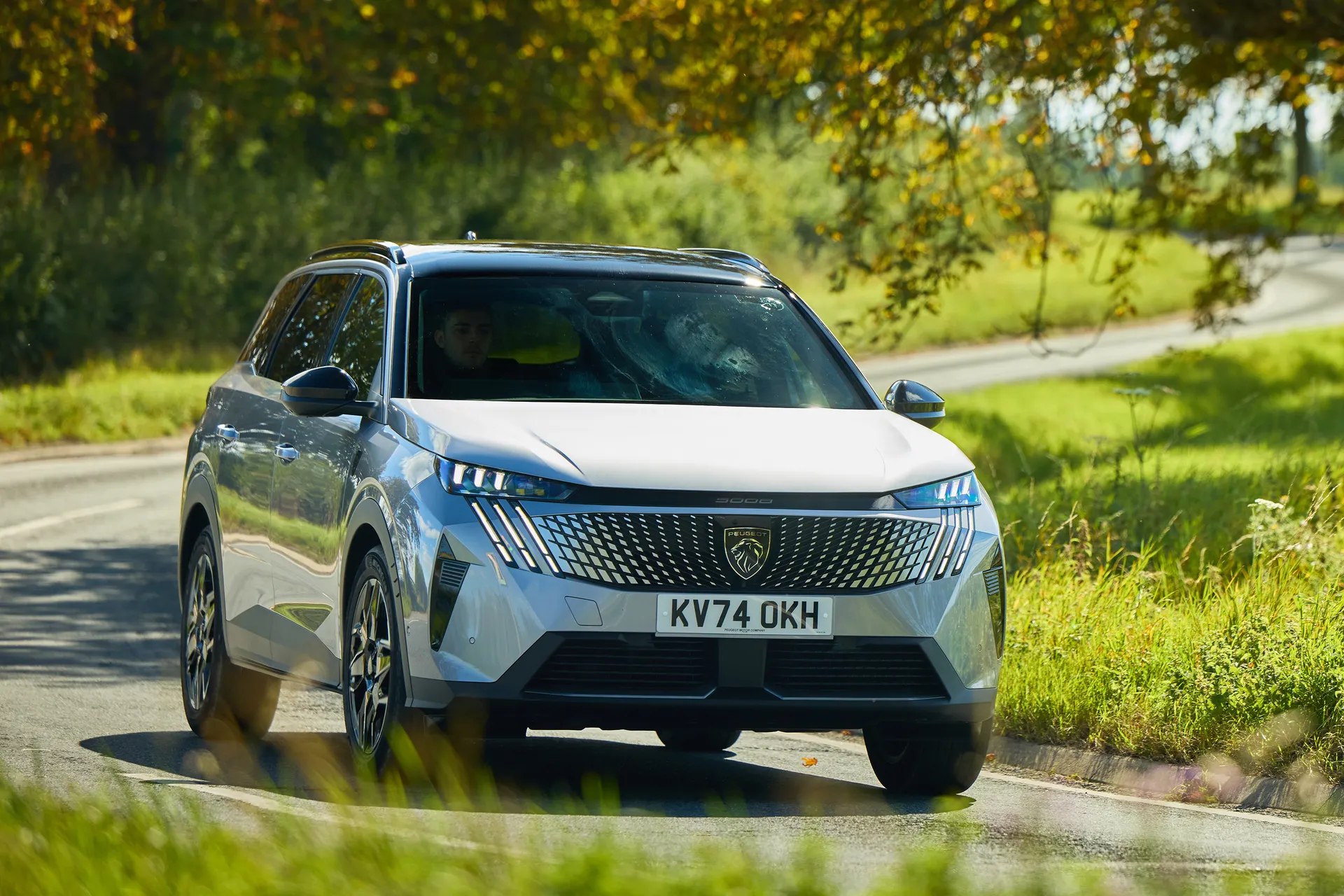
Ride comfort is always the priority in any car designed to carry lots of people, and on that score, the big Peugeot is a little disappointing. There’s a decidedly firm edge to the ride, so, at all speeds, things feel a little jittery and unsettled over rough surfaces, while potholes and sunken drain covers can give you quite a whack in the backside. To say that the car is uncomfortable would be overstating the case, but it is true that numerous rival family SUVs deliver a more cosseting experience.
The firm ride would be more forgivable if it resulted in agile handling, but the 5008 doesn’t really deliver there, either. Grip is never in short supply and body roll in corners isn’t excessive, but the car feels a little heavy and untidy when changing direction, so there’s very little satisfaction to be had. The small steering wheel initially tricks you into thinking that the steering is a little quicker than it really is, but you soon realise that its initial responses are actually quite slow and that there’s very little feedback through the steering wheel.
What engines and gearboxes are available in the Peugeot 5008?
You can have the Peugeot 5008 either as an electric car called the e-5008, or with petrol mild-hybrid or plug-in hybrid powertrains, and like we’ve already said, we’ve written a separate review for the EV versions, and this particular review focuses on the hybrids.
The entry-level choice in that range is the 48-volt mild hybrid, which is actually barely a hybrid at all. It has a 136PS 1.2-litre three-cylinder petrol engine that gets a teeny amount of extra shove from an electric motor that’s integrated into the gearbox when pulling away and accelerating. However, that amount of extra shove really is teeny, and although the car can be propelled by electric power alone, that’s only possible at ultra-low parking speeds, and only for yards - rather than miles - at a time. And often, the battery is too low for it to be possible at all.
In short, the petrol engine does that vast, vast majority of the heavy lifting, and we’re not even sure why manufacturers are allowed to call cars with this kind of 48-volt technology 'hybrids' at all, as it’s a little misleading for customers.
Anyway, hybrid or no hybrid, this is not a quick car, and it also has a rather clumsy power delivery. Apply a little pressure to the right-hand pedal to ask for some acceleration, you have to first wait out the sloppy throttle response, and then wait for the gearbox to figure out which ratio it wants to be in, and all takes what feels like a couple of seconds. And then once all that’s been sorted, the engine revs shoot upwards, and despite the roaring engine note you hear, you still don’t feel a massive amount in the way of acceleration. And that’s the case whether you’re pulling away from the mark or trying to pick up speed on the move.
And things aren’t that much different on the rare occasion you bury the throttle, which you’ll hardly ever do because there’s simply no point. Again, you have to wait a wee while for the throttle and gearbox to get their ducks in a row, and even once the engine’s drive does kick in and the unit is working to its maximum, the amount of forward motion you feel is still disproportionately modest compared to the amount of noise the engine is making. Peugeot says that the benchmark 0-62mph sprint is achievable in 11.3 seconds, but it feels rather longer than that to us.
It’s not so slow that you’ll feel like you’re holding up other road users, or that it feels dangerously short of go, but the fact remains that the performance could feel a lot more responsive, eager and flexible.
The plug-in hybrid powertrain, meanwhile, mates a 1.6-litre petrol engine with a much brawnier electric motor that’s fed by a 21kWh battery (this allows up to 55 miles of all-electric range), and the two power sources combine to send a total of 195PS to the front wheels through a seven-speed twin-clutch transmission. We’ve not tried it yet, but we’d hope that it feels considerably punchier than its lesser-powered sibling. It certainly has an advantage on paper, with a quoted 0-62mph time of 8.3 seconds.
Refinement and noise levels
As per our moan a moment ago, the 1.2-litre petrol engine in the entry-level powertrain has to work pretty hard to achieve even moderate acceleration, so it spends quite a lot of its time at relatively high revs. That in itself isn’t too much of an issue, but there is a problem in the fact that the engine sounds quite thrashy with this many revs on, so your peace is disturbed quite a lot of the time. You’ll also notice some vibrations coming through the steering wheel and pedals at the same time, too.
Maintaining motorway pace also results in a distant drone from under the bonnet, and even the smallest, subtlest request for acceleration will see the engine revs soaring once again. There’s some wind- and road noise to be detected at motorway speed, too, with the latter being the more prevalent of the two noise sources, but neither is at a troublesome level.
We haven’t yet tried the plug-in hybrid version of the 5008, so the refinement of that particular powertrain still remains unknown for now. It's able to run for up to 55 miles on electric-only power, so we’d expect a fairly peaceful life when it’s running in that fashion, but the overall level of refinement will depend on how stressed the petrol engine sounds when that kicks in.
Safety equipment: How safe is the Peugeot 5008?
The 5008 comes as standard with a suite of driver assistance features that includes automatic emergency braking, lane keep assist, speed limit recognition and driver attention alert. If you want adaptive cruise control, you either have to upgrade to GT trim, or hit the options list and add it as part of a pack that also includes other driver assistance features and a 360-degree camera.
It seems a little strange in a car with seven seats that you only get two Isofix child seat mounting points. You do get lots of airbags as standard, though. There are curtain airbags that cover all three rows of seats, while rows one and two also get side airbags, and those up front have front airbags as well.
This generation of the 5008 hasn’t yet been crash-tested by Euro NCAP, but we expect that it will be in fairly short order, and we’ll update this review when it is.
MPG and fuel costs: What does a Peugeot 5008 cost to run?
“There are two versions of 5008 that have a petrol engine, and both are hybrids. However, they’re two very different types of hybrid, and there’s an enormous difference in the amount of electrical intervention used in the business of propulsion, and as a result, an enormous amount of difference in fuel economy.”
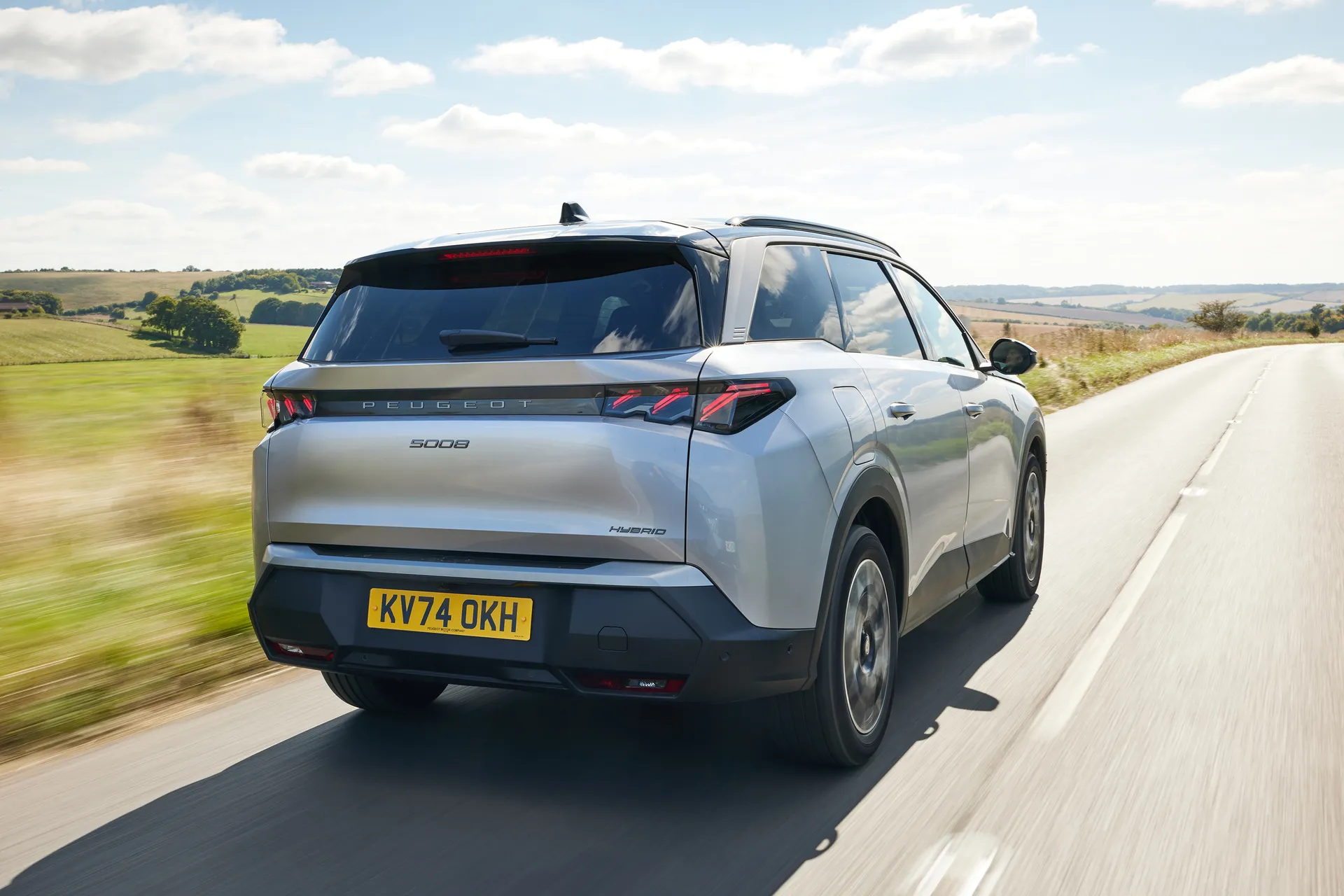
The entry-level version with the 1.2-litre petrol engine is a 48-volt mild hybrid, but in our book, it’s best not to think of this as a hybrid at all because the amount of electrical assistance that the petrol engine gets is so minimal. To be fair, the average WLTP combined-cycle fuel economy figure of 52.5mpg still isn’t bad for a car of this size, and in the real world, you can probably expect returns in the mid-40s if you’re gentle.
It’s a very different story in the plug-in hybrid. This has a much bigger battery and provides much more electrical assistance to the petrol engine: if you fully charge the batteries, it can drive up to 55 miles without the petrol engine ever switching on, according to official WLTP figures. That makes its official combined fuel economy figure much, much higher at 356.2mpg.
However, that’s not the full story, because the official tests are unrealistically flattering to plug-in hybrids, and always result in massively over-inflated figures for such cars. What you’ll actually get in the real world will depend massively on how you use your car.
For the best economy, make sure to keep your battery topped up with electricity, and also keep your journeys short enough that you can do the full distance on electric-only power. That way, you’ll never use an ounce of fuel, but then again, if you’re using your 5008 in this way, then you’ll have probably opted for the all-electric version in the first place.
If, however, you regularly rely on the petrol engine for long periods, then your fuel costs will actually be quite high. There’s a good reason for this: once your battery power runs out, the petrol engine will be getting little or no assistance, and not only that, it also has to haul around the extra weight of the batteries as well.
Peugeot 5008 reliability and warranty
This latest third-generation version of the 5008 is obviously still fairly new, so it won’t yet have featured in the HonestJohn.co.uk Satisfaction Index, our go-to source of owner-supplied reliability and customer satisfaction data. However, you might try looking back at Peugeot’s past performance in the study to find clues to how reliable the new 5008 might be, and if you do, you might be in for rather grim reading.
In the latest iteration of the survey, for example, Peugeot was named as the second-least-reliable manufacturer in the entire study, out of 29 carmakers considered. The previous version of the 5008 itself wasn’t singled out for criticism, but the smaller 3008, which is mechanically closely related, was named by owners as the second-least-reliable model in the study.
It should be noted, however, that the platform and tech that underpins the new 5008 is completely different to the mechanicals used before, so there’s little reason to think that these mechanical maladies might be inherited.
While some manufacturers competing in the midsize family SUV market offer five, seven, and even ten-year warranties, Peugeot’s warranty offering is rather less generous. There’s unlimited-mileage manufacturer cover for two years, but the third year of retailer-supplied cover has a 60,000-mile limit.
Peugeot 5008 insurance groups and costs
Go for the 1.2 petrol mild hybrid of the 5008, and your insurance grouping will be 23 if you settle for Allure trim, or 24 if you upgrade to the GT. The PHEV will cost more to cover, with groupings of 35 on the Allure and 36 on the GT.
VED car tax: What is the annual road tax on a Peugeot 5008?
Here’s the good news: because all of the petrol-engined versions of the 5008 that we’re discussing here are legally considered to be hybrids, they all qualify for a discount in annual VED car tax. And here’s the bad news: that discount amounts to just a tenner, so there’s still £180 per year to pay.
Want to hear the even worse news? Well, all but one version of the 5008 - the 1.2 petrol mild hybrid in Allure trim - cost more than £40,000 when brand new, meaning that they’re liable for the Government's ‘luxury car surcharge’. That will add another £410 to your annual bill for a five-year period between years two and six of your car’s life. And, even if you pick the one version that doesn’t bust that £40k barrier, adding a few optional extras will take it over, so you could still be stung.
Peugeot 5008 price
“If you head to Peugeot’s website to configure a brand new 5008, then prices start at around £38,000 for the 1.2 petrol mild hybrid in Allure trim, rising to around £42,000 for the GT."
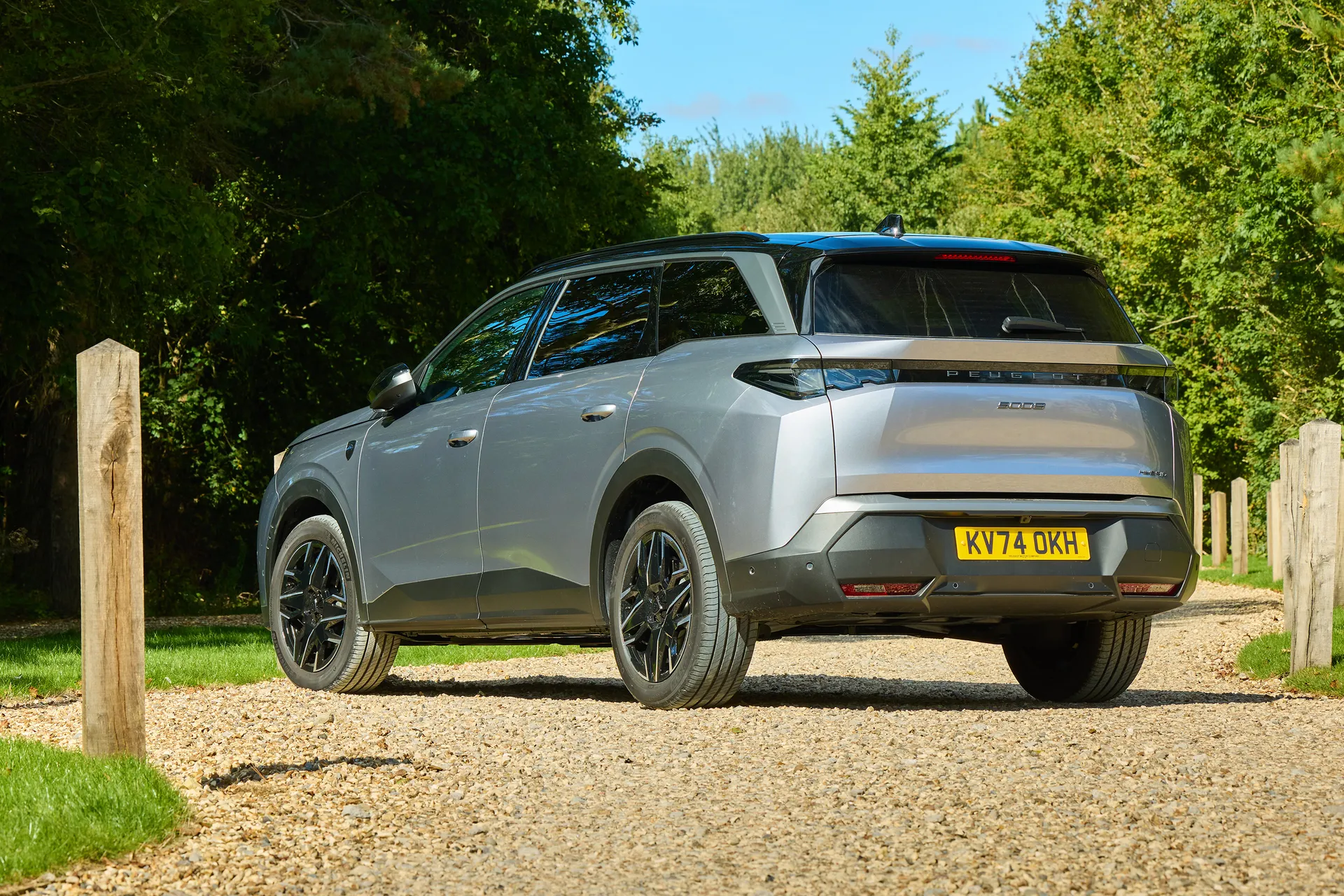
Upgrade to the PHEV, and prices begin at around £43,000 for the Allure, and rise to around £47,000 for the GT. And because the third-generation car is still fairly new, used prices haven’t had time to fall all that far just yet, but there are still some handy savings to be made.
Head to the heycar classifieds, and you’ll find the cheapest ones chipping in at about £36,000 for the base-level car. That’s for an as-new example with a single-digit delivery mileage, and the other advantage is that you won’t have to wait for it to be built and shipped.
Trim levels and standard equipment
The 5008 comes in two trim levels, Allure and GT. We’ve already discussed the infotainment and safety kit each gets, so we won’t go over old ground again here. In terms of other luxuries, Allure versions come with keyless entry and go, tri-zone climate control, automatic light and wipers, rear parking sensors, self-washing reversing camera, ambient lighting, part-leather-effect upholstery, four electric windows, power folding door mirrors, an electric parking brake, a leather steering wheel and cruise control. On the styling front, you get metallic paint, all-round LED exterior lights, rear privacy glass and 19-inch alloy wheels.
GT cars look a little smarter with 20-inch alloys, pixel LED rear lights and a black roof, while you also get niceties like adaptive cruise control with stop and go, a heated steering wheel, heated front seats, driver’s lumbar adjustment, extended ambient lighting, rear manual window blinds, front parking sensors, a handsfree powered tailgate and LED headlights with adaptive high beam function.
Ask the heycar experts: common questions
Is the Peugeot 5008 hybrid or electric?
Is the Peugeot 5008 a seven-seater?
Is the Peugeot 5008 a good car?
Get our latest advice, news and offers
Keep me updated by email with the latest advice, news and offers from heycar.
By submitting you agree to our privacy policy
